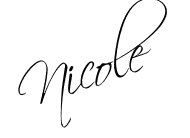There have been tutorials for how to make your own chalkpaint, but what about a tutorial for how to make your own PAINT???
The following is a guest post written by James Lander of Coupons. Coupons is a consumer savings site that provides couponing tips and etiquette advice. They also offer top-retailer coupon information.
-------------------------------------------
You can choose from a variety of mixtures when trying to make the ideal paint. This is a guide on how to make basic casein paint.
Basic ingredients of paint:
• Pigment – adds color to the paint. Safer alternatives include pigment derivatives from plants, insects, minerals and iron oxides.
• Binder – helps glue the paint to the surface. Natural paints use binders made from starches, casein, and linseed oil.
• Filler – adds bulk and gives the paint texture. Paints made with starches are often paired with clay as filler because it enhances the binding ability of starch.
• Solvents – also called thinners, helps to achieve a practical consistency.
How to make casein paint
Ingredients:
• Non-fat milk – 1 gallon
• Type S lime – 2 ½ ounces
• Water – 2 ½ cups
• Filler – 6 cups
• Natural earth pigment
Instructions:
1. Set milk aside in a warm place and leave for a few days to thicken. Then pour it through a cheesecloth lined colander into another container; it should make about two cups of curd.
2. Blend the curds and the lime powder together using a blender. If mixture is too thick to blend well, add some water. Remove lumps by straining.
3. Prepare the binder and immediately add water.
4. Moisten the pigments and crush. Slowly add pigment to the mixture in bits until you achieve the desired color intensity.
5. Blend with filler.
After the paint has been mixed, spread on a small area to test, and let dry completely. Observe and make adjustments accordingly:
• Add water if the paint doesn’t spread easily.
• Add binder if it dusts easily.
• Add filler if it appears thin.
• And finally, add pigment powder if color isn’t rich enough.
Tips
Mix ingredients in specific proportions so that the paint doesn’t crack, peel and dust off easily. The more the paint dries, the more opaque it becomes, so allow each coat to dry completely. Avoid very thick coats.
--------------------------
What a neat idea!!
Thanks so much for sharing!



1 comment:
Hmmmm. I think if I told Brawn tomorrow that I was gonna make my own paint he'd probably take my washing machine away and replace it with a rock! He would think I'm taking this DIY stuff too serious. So you make some and let me know how it works, ok?
~Bliss~
Post a Comment